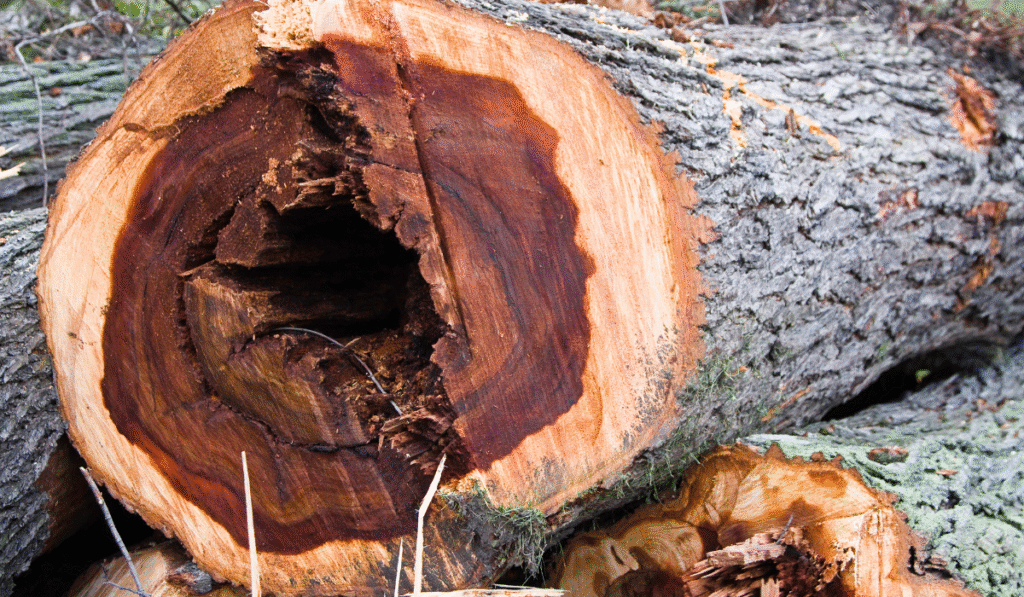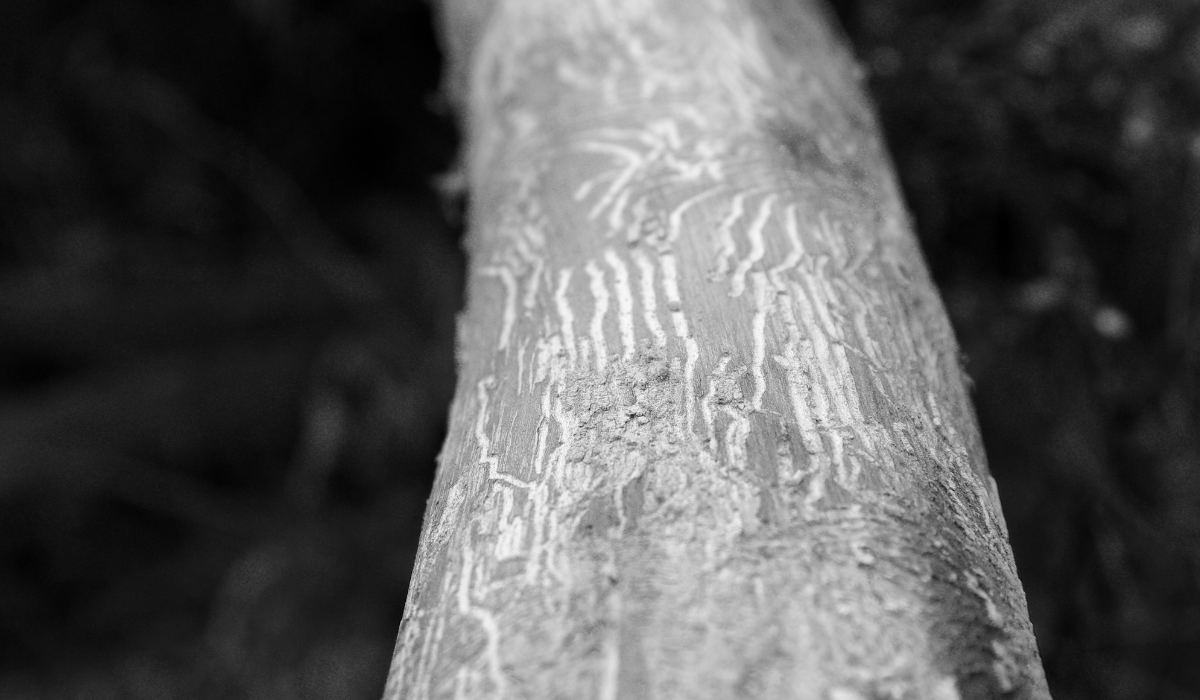What Signs Indicate a Tree Has Dutch Elm Disease?
Dutch Elm Disease (DED) is one of the most destructive tree illnesses in modern history. Since the 1960s, it has wiped out millions of elm trees across the UK and changed the look of our towns, cities, and countryside forever. Once proud avenues of towering English elms have all but vanished, leaving only scattered survivors and resistant cultivars in their place.
For homeowners and landowners, Dutch Elm Disease is not simply a problem from the past. The disease remains present in many parts of Britain today, and elm trees, whether in gardens, along hedgerows, or in local parks, are still vulnerable. Being able to spot the warning signs early is crucial, as quick action may prevent the spread to nearby trees and preserve what elms we still have. With advice from Plymouth Tree Surgeon, they explain in depth the symptoms of Tree Diseases, how it spreads, why it is so devastating, and what practical steps homeowners can take if they suspect a problem.
Understanding Dutch Elm Disease
What Causes It?
Dutch Elm Disease is caused by the fungus Ophiostoma novo-ulmi (and its less aggressive relative, Ophiostoma ulmi). The fungus is spread in two main ways:
- Elm Bark Beetles – Tiny beetles that feed and breed beneath elm bark. As they tunnel, they carry fungal spores from tree to tree.
- Root Grafts – In some cases, neighbouring elm trees whose roots have naturally fused together can pass the infection underground.
How It Affects the Tree
Once inside, the fungus spreads through the tree’s xylem (the tissue that carries water). It produces spores that clog these vessels, effectively cutting off the tree’s ability to move water and nutrients. The result is wilting, dieback, and eventual death.
Early Signs of Dutch Elm Disease
Spotting DED early gives the best chance of limiting its damage. Homeowners should regularly inspect elms during the growing season, especially between May and August when symptoms are most obvious.
1. Wilting and Curling Leaves
Leaves at the ends of upper branches may suddenly wilt and curl, as though the tree is drought-stressed, even when rainfall has been plentiful. This wilting usually appears on one side of the tree first.
2. Yellowing and Browning of Leaves
Soon after wilting, leaves turn yellow, then brown, and finally shrivel. This progression can happen very quickly, sometimes within weeks.
3. Premature Leaf Drop
Infected branches may shed leaves months before the normal autumn fall. If you notice bare patches in the canopy by midsummer, Dutch Elm Disease may be to blame.
4. Branch Dieback
As the fungus spreads, entire branches die off. Dieback often begins at the crown and progresses downward, leaving the tree with sparse, unhealthy growth.
5. Dark Streaks in the Wood
A reliable way to check for DED is to remove a small section of bark from a recently wilted branch. Beneath the surface, infected wood often shows dark brown or black streaks running along the grain.
6. Rapid Decline or Sudden Death
While mature trees may linger for several seasons, younger or heavily infected elms can collapse within a single summer. The speed of decline is one reason the disease has been so devastating.
Advanced Symptoms and Progression

As Dutch Elm Disease advances, homeowners may notice:
- Uneven Canopy Shape: Healthy growth on one side, with bare or dying branches on the other.
- Insect Activity: Small exit holes from elm bark beetles may appear on the bark.
- Fungal Spread Nearby: Neighbouring elms begin to show similar symptoms, indicating local spread.
If multiple elms in the same area begin to decline simultaneously, it is almost certain that Dutch Elm Disease is present.
Why Dutch Elm Disease Is So Dangerous
- No Cure: There is currently no effective cure once a tree is infected. Treatments may slow the disease but rarely save the tree.
- Fast Transmission: Bark beetles can carry spores over significant distances, and root grafts allow rapid underground spread.
- Wider Ecological Impact: Loss of elms affects not only landscapes but also wildlife, as many birds, insects, and lichens depend on them.
According to Plymouth Tree Surgeon, Dutch Elm Disease is one of the most serious cases where delay in action can lead to the loss of entire tree populations in an area.
What To Do If You Suspect Dutch Elm Disease
Step 1: Inspect the Tree Thoroughly
Look for the combination of leaf wilting, yellowing, premature drop, and streaked wood. Compare the canopy to nearby trees.
Step 2: Contact a Professional
Do not attempt to diagnose or manage Dutch Elm Disease on your own. Tree surgeons have the training and tools to identify it accurately. Plymouth Tree Surgeon can conduct a site inspection and confirm whether DED is present.
Step 3: Remove Infected Material Safely
Infected branches or whole trees may need to be felled. Crucially, infected wood should never be stored as firewood or mulch, as it can harbour beetles and spread the fungus further.
Step 4: Monitor Surrounding Trees
Neighbouring elms should be closely monitored for signs of infection, as they are at high risk.
Can Dutch Elm Disease Be Prevented?
While it cannot be fully prevented, certain measures reduce the risk:
- Plant Resistant Varieties: Some newer cultivars, such as ‘New Horizon’ and ‘Lutece’, have been bred for resistance.
- Regular Inspections: Homeowners should check their trees annually, particularly in late spring and summer.
- Prompt Professional Care: Addressing early infections through pruning or removal can sometimes save nearby elms.
- Responsible Wood Management: Avoid moving elm logs or branches from infected areas.
The Role of Professional Tree Surgeons
Tree surgeons play a key role in managing Dutch Elm Disease. They can:
- Confirm diagnosis using industry knowledge and tests.
- Safely fell infected trees and dispose of timber responsibly.
- Advise on replacement planting with resistant species.
- Help local councils and communities manage wider outbreaks.
Plymouth Tree Surgeon offers expert services in detecting and managing Dutch Elm Disease, ensuring that homeowners in Devon take the right steps to protect both their trees and the wider landscape.
Final Thoughts
Dutch Elm Disease remains a serious threat to elm trees across the UK. Recognising its signs, wilting, yellowing, early leaf fall, streaked wood, and branch dieback, is the first step in managing the problem.
Although there is no cure, swift action guided by professionals like Plymouth Tree Surgeon can help slow its spread and protect remaining elms. For homeowners, vigilance and timely intervention are key. Every elm tree saved contributes to the preservation of one of Britain’s most iconic species.


Comments are closed